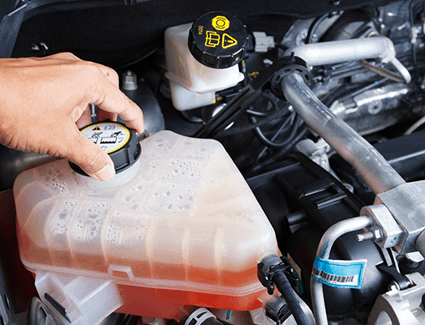What Engine Coolant for My Car?
Introduction
Engine coolant, also known as antifreeze, is a vital fluid that helps keep your car’s engine running smoothly and efficiently.
It prevents the engine from overheating and protects it from corrosion.
Choosing the right engine coolant for your car is essential to maintaining its performance and longevity.
Types of Engine Coolant
-
Inorganic Additive Technology (IAT) Coolant
IAT coolant is the traditional type of engine coolant and is commonly found in older vehicles.
It contains inorganic additives, such as silicates and phosphates, that protect metal components in the cooling system from corrosion.
However, these additives can break down over time and form deposits, which can reduce the coolant’s effectiveness. -
Organic Acid Technology (OAT) Coolant
OAT coolant is a newer type of engine coolant that is becoming more common in modern vehicles.
It contains organic acids, such as carboxylates, that form a protective layer on metal surfaces in the cooling system.
This layer helps prevent corrosion and extends the coolant’s lifespan. -
Hybrid Organic Acid Technology (HOAT) Coolant
HOAT coolant is a blend of IAT and OAT coolant.
It contains both inorganic and organic additives, which provide a balance of corrosion protection and long-term stability.
HOAT coolant is suitable for use in a wide range of vehicles, both old and new.
Choosing the Right Engine Coolant
When choosing engine coolant for your car, it is important to consider the following factors:
- Vehicle manufacturer’s recommendations: Most vehicle manufacturers specify the type of engine coolant that is suitable for their vehicles.
This information can be found in the owner’s manual or on the manufacturer’s website. - Engine type: Different engine types require different types of coolant.
For example, aluminum engines require coolant with specific additives to prevent corrosion. - Climate: If you live in a cold climate, you will need to use a coolant that is freeze-resistant.
If you live in a hot climate, you will need to use a coolant that is boil-resistant.
Flushing and Replacing Engine Coolant
Engine coolant should be flushed and replaced periodically to ensure its effectiveness.
The frequency of replacement depends on the type of coolant used and the vehicle manufacturer’s recommendations.
Generally, IAT coolant should be replaced every 2 years or 30,000 miles, OAT coolant every 5 years or 100,000 miles, and HOAT coolant every 5-7 years or 100,000-150,000 miles.
To flush and replace engine coolant, follow these steps:
- Allow the engine to cool completely.
- Locate the radiator drain plug and open it.
Allow the coolant to drain completely into a drain pan. - Close the radiator drain plug.
Fill the radiator with clean water and run the engine for a few minutes. - Drain the water from the radiator and repeat step 3 until the water runs clear.
- Fill the radiator with the recommended type and amount of engine coolant.
- Run the engine and check for leaks.
Conclusion
Choosing the right engine coolant for your car is essential to maintaining its performance and longevity.
Consider the vehicle manufacturer’s recommendations, engine type, and climate when selecting a coolant.
Flush and replace engine coolant periodically to ensure its effectiveness.
By following these tips, you can help keep your car running smoothly for many years to come.





